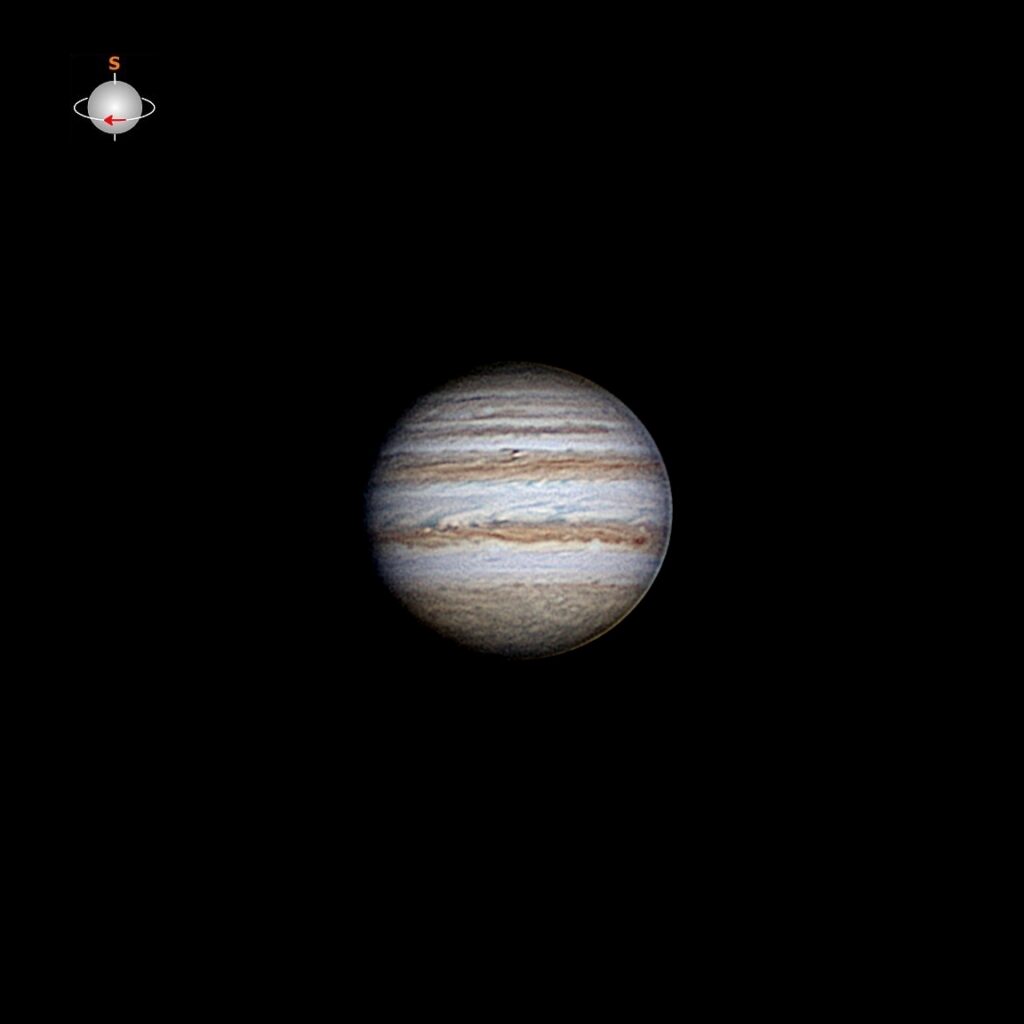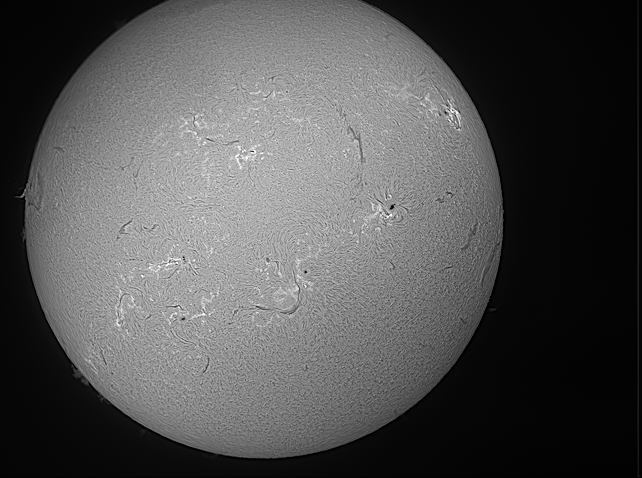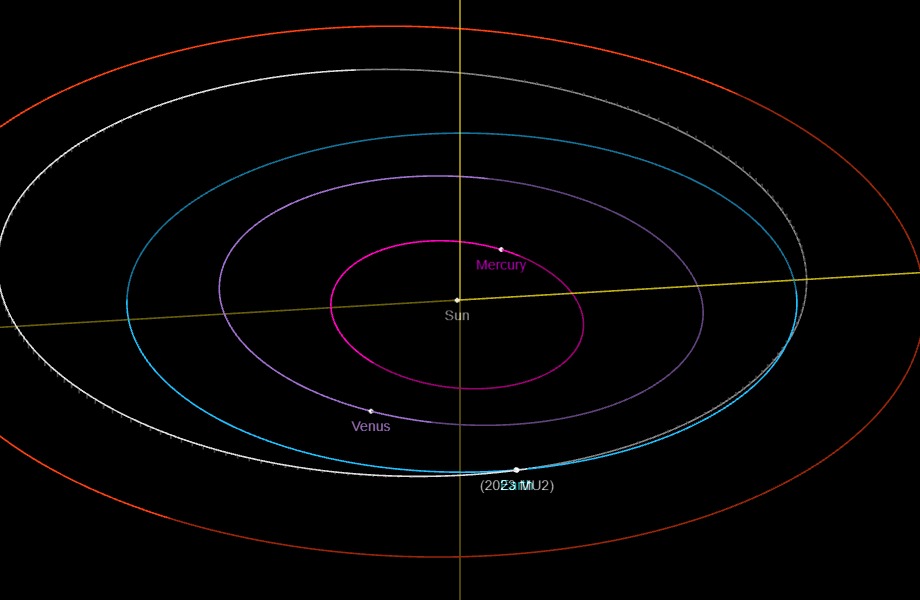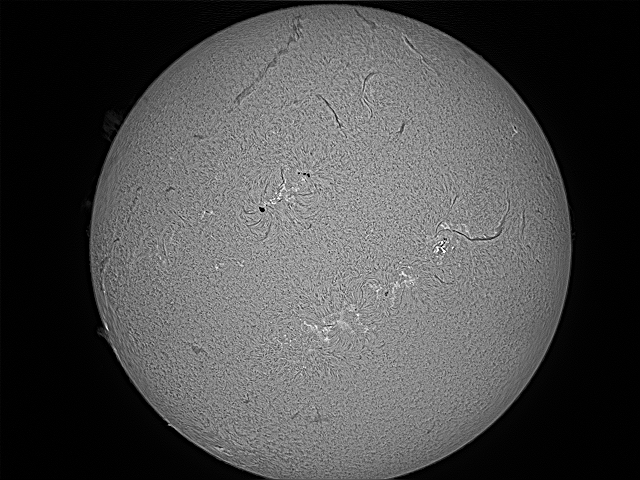The PTO is still set up for planetary imaging. I was able to wait out the clouds and got some shots of Jupiter early this morning. The planet is currently in the constellation Ares and transits around 0445 CDT which puts it high overhead at dawn. At 1600 CDT today, the planet will halt its forward motion and appear to start backing up in the sky. This retrograde motion is an illusion due to the Earth’s and Jupiter’s locations in the solar system and their relative motions.
The image is, as indicated, a full LRGB image. The jet stream forecast was for good upper level conditions and the fine detail in the cloud tops show that to be the case.



